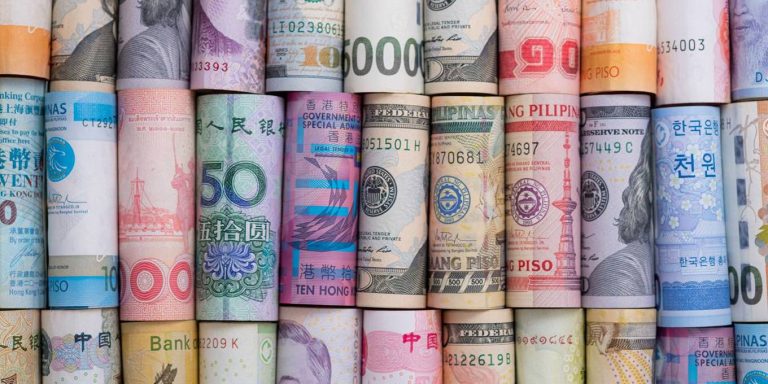
India is one of the world’s largest gold importers. Dubai, as a significant gold trade center, is a major source of gold imports into India. Millions of Indians fly to and from Dubai with gold every year. However, the Reserve Bank of India and the Indian Customs Department have rules and regulations governing how much gold one can legally import or transport as baggage from Dubai to India.
People frequently desire to bring back gold from Dubai in physical form, such as jewelry and bars, due to the cultural and religious significance of gold in India. However, tourists must be aware of the restrictions, as exceeding them might result in penalties and taxes.
This guide seeks to provide a detailed summary of the current laws and guidelines governing gold imports from Dubai in order to assist travelers in understanding how much gold they are permitted to take as accompanying baggage or send by courier without paying customs duty.
Is Gold Cheaper in Dubai Than in India?
One of the key reasons that Indians travel to Dubai to buy gold is the significant price gap between prices in India. Gold has always been more expensive in India due to factors such as import charges and taxes. However, gold prices in Dubai and India have recently narrowed the difference.
Nonetheless, Dubai offers lower gold prices than most Indian locations. The absence of a goods and services tax (GST) on gold in Dubai helps to keep prices cheaper when compared to India’s 3% GST on gold jewelry and bullion. Other variables, like cheaper manufacturing costs by Dubai jewelry stores, also contribute to lower prices. On average, 24K gold is 5% to 7% cheaper in Dubai than in major Indian cities.
The price difference is determined by daily global rates and the currency rate between the Indian rupee and the UAE dirham. However, consumers wishing to buy gold in bigger quantities should expect to save more by purchasing from Dubai. One of the primary reasons Dubai remains a popular shopping and gold investment destination for Indian citizens is the pricing advantage.
What are Custom Duty Charges on Gold?
Custom duty charges on gold are import taxes levied by the Indian government on gold brought into the nation by individuals. These fees are critical components of the country’s fiscal policy, as they regulate and monitor the entry of this valuable metal. When transporting gold into India, it is critical to understand the Central Board of Indirect Taxes and Customs (CBIC) customs tax rate. For Indian passport holders and those of Indian descent, the duty rate changes based on the length of stay abroad.
Individuals who have been abroad for more than six months are entitled to a duty remission of 12.5% + social welfare surcharge of 1.25% on the gold they bring back to India.
Custom Duty Charges On Gold Bars
The amount of customs tax that must be paid for gold bars is determined by the quantity imported. If the amount of gold bars brought in is less than 1 kilogram per passenger, a 10% customs charge is levied on the value of the gold bars.
If the quantity of gold bars is less than 20 grams, no customs duty is required. A 3% customs charge is levied on the value of gold bars weighing 20-100 grams.
Custom Duty Charges On Other Forms (Coins, Ornaments)
A 10% customs charge is levied on gold coins if the total amount imported is less than 100 grams per passenger. However, if the total weight of the gold coins is less than 20 grams, no customs duty is required.
A customs charge of 10% is levied on the total stated value of gold coins weighing 20 grams to 100 grams.
No customs tax is due on gold jewelry and ornaments if the total weight is less than 20 grams and the entire value is less than INR 50,000. However, if the quantity is less than 20 grams and the value exceeds INR 50,000, a 10% customs charge is levied on the excess amount.
A flat customs charge of 10% is paid to the whole declared value of gold ornaments weighing between 20 grams and 100 grams. In addition to the basic customs duty, IGST and additional taxes must be paid. Jewelry products must be properly documented for customs clearance.
How Custom Duty on Gold is Calculated in India
The method used to calculate customs duty on gold imported into India is determined by the type of gold item and the quantity brought in. The important processes in all categories are estimating the value of gold, applying the applicable duty rate, and adding taxes on the duty amount.
Gold goods such as bars, coins, and jewelry are valued based on current worldwide gold prices for 24K purity on the day of import. The customs department applies the appropriate duty slabs ranging from 0% to 10% based on this assessed value.
For example, if 1 kg of gold bars valued INR 5 lakh is imported, a 6% customs duty will be levied on the entire amount. This equates to INR 30,000 in duty. The INR 30,000 is thereafter subject to IGST and other taxes.
For customs to precisely estimate the value, proper documentation of purchase invoices, certificates showing purity and quantity are required. Failure to declare the correct information may result in penalties, increased duties, and, in some situations, confiscation. To avoid problems, clear communication and documentation are essential.
Duty-free Gold Carrying Limits For Male Passengers
For male passengers returning to India from abroad, the duty-free gold carrying limit is 20 grams worth up to INR 50,000. This means that if a male traveler is carrying gold jewelry or gold in bar form in an amount not exceeding 20 grams and with a value not exceeding INR 50,000, he is exempt from paying customs duty. This concession allows male tourists to carry back a small amount of gold for personal use without incurring any tax liability.
However, if the amount of gold transported exceeds 20 grams or its value exceeds the INR 50,000 limit, customs duty must be paid on the extra amount. The duty rates are 3%, 6%, or 10% depending on whether the extra gold quantity is 20 grams to 50 grams, 50 grams to 100 grams, or more than 100 grams. Purchase invoices with the purity, price, and date must also be produced for verification at Indian customs.
Duty-free Gold Carrying Limits For Female Passengers
The duty-free gold carrying limit for female passengers returning to India from abroad, such as Dubai, is 40 grams worth up to INR 100,000. This generous limit applies to both gold jewelry as well as gold bars/coins that women may want to bring back for personal use. As long as the total quantity of gold does not exceed 40 grams and the value is within INR 100,000, no customs duty needs to be paid.
However, if the female passenger is carrying more than the prescribed 40 grams of gold, whether as jewelry or bars, she will have to pay customs duty on the excess amount above the duty-free limit. The duty rate will depend on the exact quantity, with slabs of 3%, 6% or 10% applied depending if it is between 40-100 grams, 100-200 grams or over 200 grams respectively. Proper documentation of purchase will also need to be presented for verification at Indian customs.
Duty-free Gold Carrying Limits For Childrens
Customs duty exemption limitations for children under the age of 15 traveling into India from outside the country are more forgiving than those for adult male and female passengers. Children are permitted to bring gold ornaments and bars weighing up to 40 grams without paying any customs charge. Within appropriate bounds, this allows gold presents or objects to be brought back for the child.
However, if the amount of gold exceeds 40 grams, duty is levied on the excess. A 3% duty is paid on gold from 40 grams to 100 grams, a 6% duty on gold weighing 100 grams to 200 grams, and a 10% duty on gold weighing more than 200 grams. The duty is determined using current international gold rates. Adults who accompany the child must bring paperwork establishing the youngster’s identification and relationship to them, as well as purchase invoices for the gold objects. This is to assist customs officers in verifying the details during clearance, as well as to allow for children’s gold baggage within India.
Bottom Line
Finally, it is critical for passengers to be aware of the gold import limits when transporting gold from Dubai to India, whether as accompanied baggage or via courier. Failure to declare precise quantities or exceeding the allowed limits can result in penalties, taxes, and possibly the seizure of gold. While Dubai has lower gold prices than India, customs duties must be considered in… amounts.
Following the gender and age-specific limits assures a smooth customs clearance with no surprise duty or tax charges. Proper documentation proving purchase, purity, and value is also required to prevent difficulties at Indian ports and airports. Overall, with careful planning and adhering to the established limits, visitors can legally import duty-free gold in modest quantities for personal use from Dubai to India.
Frequently Asked Questions (FAQs)
Who sets the limit on the amount of gold that can be brought from Dubai to India?
The limits on the amount of gold that can be brought from Dubai to India are set by the Indian government, specifically the Directorate General of Foreign Trade (DGFT) and the Customs department. These limits may be subject to change, so it’s advisable to check with the relevant authorities or official sources for the most up-to-date information.
Can I bring gold in my luggage?
Yes, you can bring gold in your luggage when traveling to India. However, there are limits on the amount of gold that can be brought without incurring customs duties. The rules and limits can change, so it’s essential to check with Indian customs authorities for the most current regulations.
How much custom duty is charged on gold in India 2023?
Custom duty ranges from 3% to 10% depending on the quantity and form of gold. Up to 20 grams no duty for males and 40 grams for females.
What are the conditions to bring gold to India without any restrictions?
The gold quantity should be within the duty free limits set for gender and age. Proper purchase invoices also need to be presented.
Are children levied tax for gold jewelry in India?
No, children under 15 years have higher limits of up to 40g attracting no duty and up to 200g attracting only 3% to 10% duty based on quantity.







